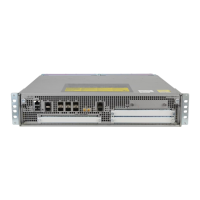3-49
Cisco IOS XR Getting Started Guide for the Cisco XR 12000 Series Router
OL-24755-01
Chapter 3 Configuring General Router Features
Managing Configuration Sessions
access-lists Access lists
address-pool Local address pool
adjacency Adjacency information
af-ea AF-EA Platform details
aliases Display alias commands
app-obj APP-OBJ Show Commands
aps SONET APS information
aqsm AQSM show commands
aqsmlib AQSMLIB show commands
arm IP ARM information
arp ARP show commands
arp-gmp ARP show commands
asic-errors ASIC error information
atc Attractor Cache related
atm ATM information
atm-vcm Show atm_vcm component
attractor Show commands for attractor process
attribute IM Attributes operations information
auto-rp Auto-RP Commands
bcdl Show Bulk Content DownLoader information
bfd BFD information
--More--
Note The commands available depend on the router mode and your user group assignments.
Step 3 If you belong to a user group that has configuration privileges, you can place the router in the global
configuration mode by entering the configure command:
RP/0/0/CPU0:router# configure
RP/0/0/CPU0:router(config)#
Step 4 From global configuration mode, you can place the router in a configuration submode, such as interface
configuration mode or a protocol-specific configuration mode.
In the following example, the router enters interface configuration mode and the user selects a POS
interface for configuration. The command syntax is interface type rack/slot/module/port.
RP/0/0/CPU0:router(config)# interface POS 0/2/0/4
RP/0/0/CPU0:router(config-if)#
The command mode prompt changes from (config) to (config-if) and you can now enter configuration
commands for the specified interface.
Step 5 To exit interface configuration mode and return to global configuration mode, enter the exit command.
To return to EXEC mode, enter the end command.
Managing Configuration Sessions
In the Cisco IOS XR software, you cannot change the running (active) configuration directly. Enter
configuration changes into an inactive target configuration. When the target configuration is ready for
use, you can apply that configuration to the router with the commit command. This two-stage process
allows you to make, edit, and verify configuration changes before impacting the actual running state of
the router.
Figure 3-5 shows the two-stage configuration process.

